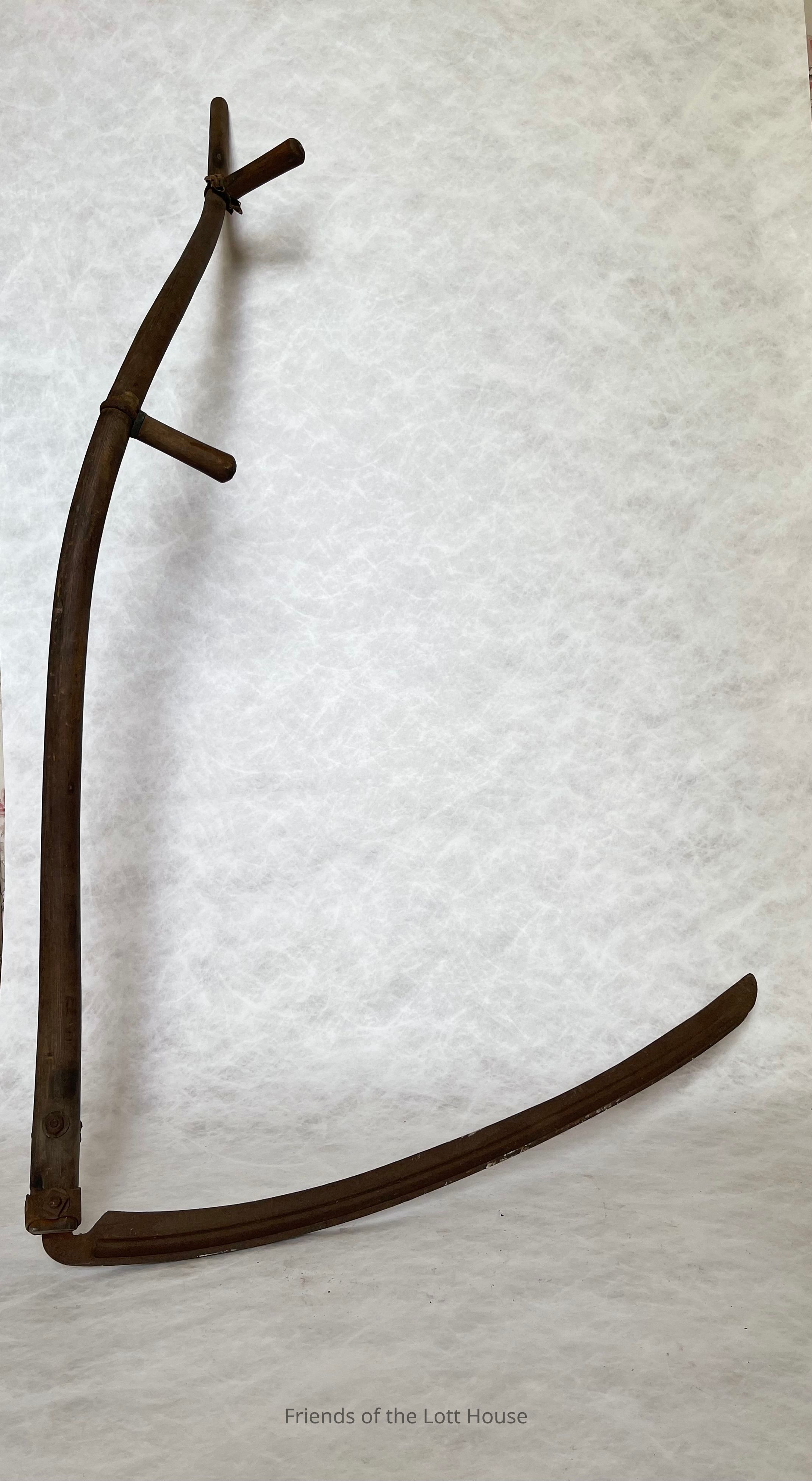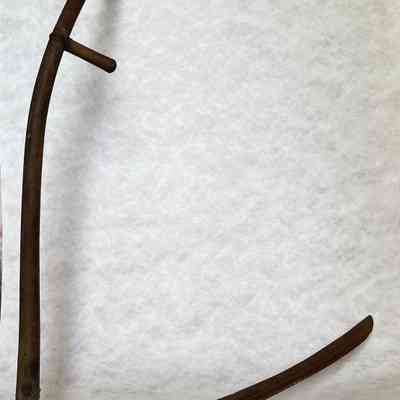Scythe

Before the introduction of mechanical tools in the late 19th and early 20th centuries, the scythe was a fundamental tool for farming. It allowed farmers to work large areas of land, harvest crops efficiently, and manage vegetation across diverse landscapes. Its design consists of a long, curved blade attached to a wooden handle, with the user swinging the blade to cut through tall grass or crops. Historically, the scythe was essential for various farming tasks before modern machinery like harvesters took over. The efficiency and precision of the scythe, combined with its simple design and low cost, made it a staple in agriculture for centuries. With over 240 acres by the 1850s, the Lott’s would have likely used this scythe in many ways. One of the most common uses of a scythe was for mowing hay or cutting grass in fields. Farmers would use the scythe to cut large swaths of grass, which would then be dried and used as fodder (animal feed) for livestock during winter when fresh pasture was unavailable. This process, called haymaking, was crucial for ensuring livestock had enough food throughout the year. Scythes were widely used to harvest grain crops, such as wheat, oats, and rye, particularly before the advent of mechanized combines. Farmers would swing the scythe to cut down the grain stalks at the base. After cutting, the grain would be bundled into sheaves for threshing. The scythe allowed for faster and more efficient harvesting than hand tools like sickles, and it was more effective for cutting larger grain areas.
